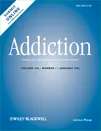| Titre : | Relative risk of injury from acute alcohol consumption: modeling the dose-response relationship in emergency department data from 18 countries (2015) |
| Auteurs : | C. J. CHERPITEL ; Y. YE ; J. BOND ; G. BORGES ; M. MONTEIRO |
| Type de document : | Article : Périodique |
| Dans : | Addiction (Vol.110, n°2, February 2015) |
| Article en page(s) : | 279-288 |
| Langues: | Anglais |
| Discipline : | EPI (Epidémiologie / Epidemiology) |
| Mots-clés : |
Thésaurus mots-clés ALCOOL ; URGENCE ; DOSE-REPONSE ; TYPE D'USAGE ; FACTEUR DE RISQUE ; ACCIDENT ; TRAUMATISME ; MODELE STATISTIQUEThésaurus géographique INTERNATIONAL |
| Résumé : |
Aims: To update and extend analysis of the dose-response relationship of injury and drinking by demographic and injury subgroups and country-level drinking pattern, and examine the validity and efficiency of the fractional polynomial approach to modeling this relationship.
Design: Pair-matched case-cross-over analysis of drinking prior to injury, using categorical step-function and fractional polynomial analysis. Setting: Thirty-seven emergency departments (EDs) across 18 countries. Participants: A total of 13 119 injured drinkers arriving at the ED within 6 hours of the event. Measurements: The dose-response relationship was analyzed by gender, age, cause of injury (traffic, violence, fall, other) and country detrimental drinking pattern (DDP). Findings: Estimated risks were similar between the two analytical methods, with injury risk doubling at one drink [odds ratio (OR) = 2.3-2.7] and peaking at about 30 drinks. Although risk was similar for males and females up to three drinks (OR = 4.6), it appeared to increase more rapidly for females and was significantly higher starting from 20 drinks [female OR = 28.6; confidence interval (CI) = 16.8, 48.9; male OR = 12.8; CI = 10.1, 16.3]. No significant differences were found across age groups. Risk was significantly higher for violence-related injury than for other causes across the volume range. Risk was also higher at all volumes for DDP-3 compared with DDP-2 countries. Conclusions: There is an increasing risk relationship between alcohol and injury but risk is not uniform across gender, cause of injury or country drinking pattern. The fractional polynomial approach is a valid and efficient approach for modeling the alcohol injury risk relationship. |
| Domaine : | Alcool / Alcohol |
| Refs biblio. : | 38 |
| Affiliation : | Statistical and Data Services Department, Alcohol Research Group, Emeryville, CA, USA |
| Cote : | Abonnement |
 Accueil
Accueil



